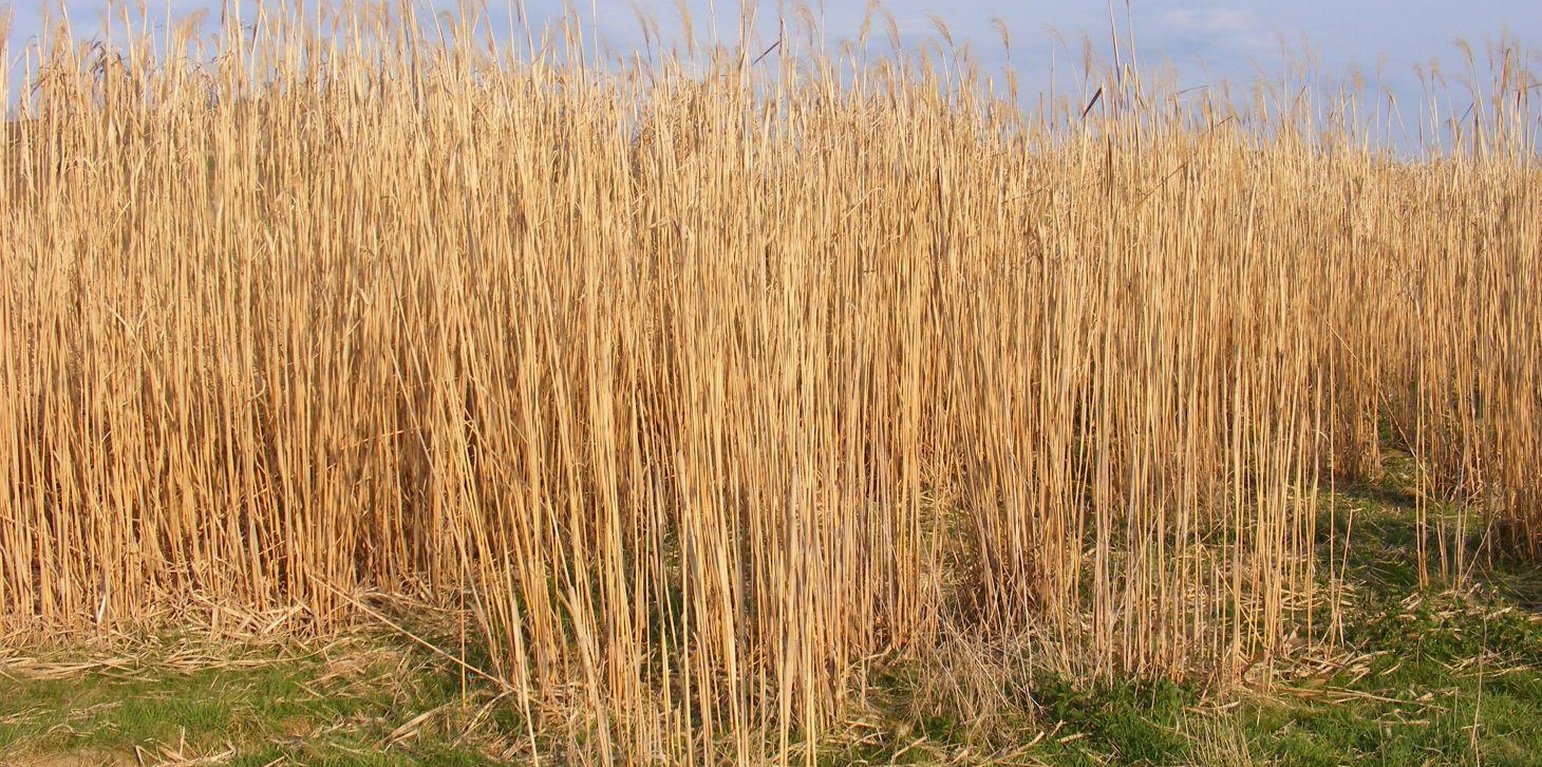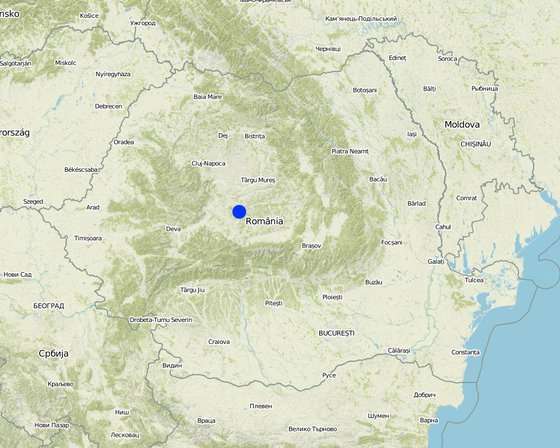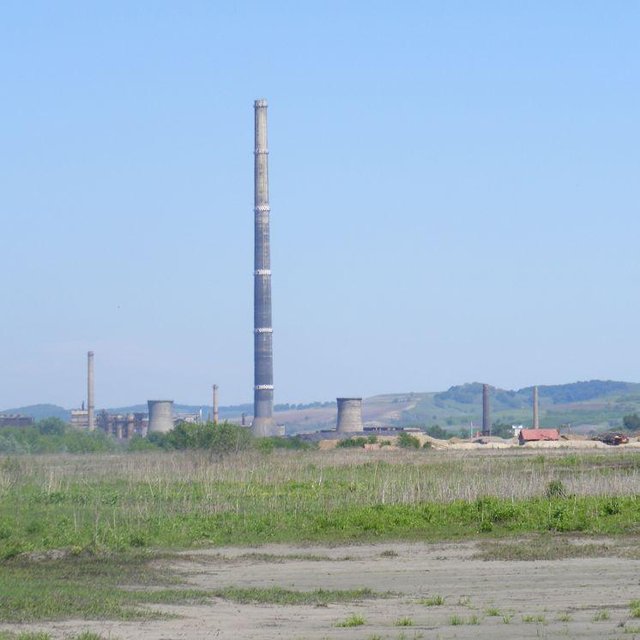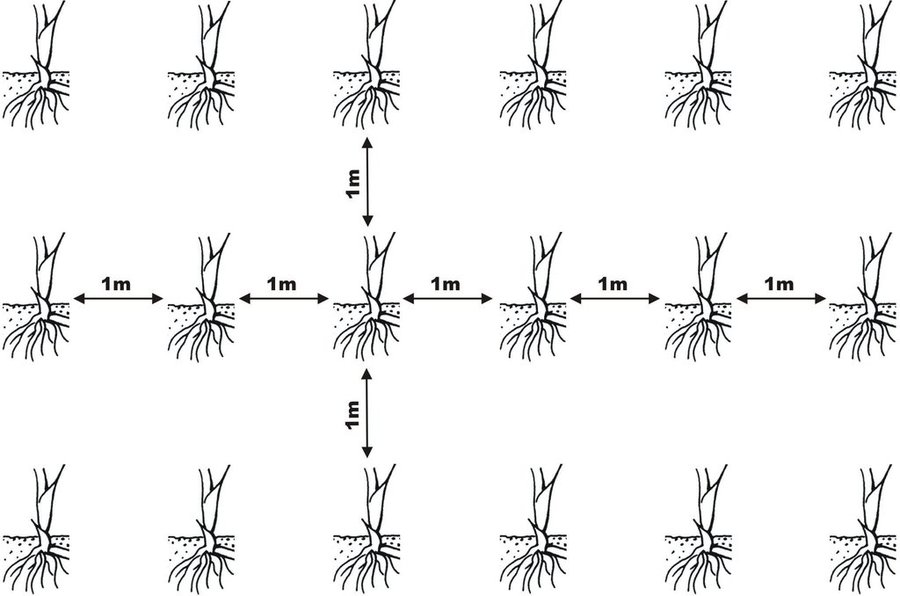



Cropping Miscanthus sinensis gigantheus mainly addresses the problem of land contamination with toxic materials namely soil pollution with heavy metals due to industrial activities. Miscanthus is a perennial warm-season grass used as a commercial energy crop. The plant is a sterile hybrid, unable to produce viable seed, vegetative propagation being by rhizomes, therefore reducing the risk to become invasive. Its special type of photosynthesis (C4) implies the return of the nutrients in the rhizomes during the cold season. As temperatures cool in the fall, the dark green foliage fades to buff and drops, leaving the stems which are the most important commercial part of Miscanthus. Regarding cropping on contaminated soils, research has shown that the amount of heavy metals uptaken by Miscanthus is extremely low, making the plant unsuitable for phytoextraction but allowing it to be used for green energy or in various other fields like pulp and paper industry, without any risk. Miscanthus sinensis gigantheus stands for an alternative crop, from which an annual income can be obtained, instead of food crops and fodder that can represent a risk for human and animal consumption in areas with soils contaminated with heavy metals.
The aim of this technology is to assure a sustainable use of polluted soils with heavy metals through cultivation of energy crops with economic value and very few risks for humans, animals and environment. Studies of Miscanthus sinensis gigantheus behaviour on contaminated soils with heavy metals showed that very small amount of Pb (Lead) and Cd (Cadmium) were detected in the upper parts of the plants. In comparison, higher amounts of heavy metals is being retained at root level in rhizomes, which in time will decrease when root system will develop deeper, in less affected soil horizons as roots can reach 2-3 m in depth. The applied technology increases overall soil quality in terms of organic matter, nutrients and structure. Miscanthus cropping enhances the nutrients cycle in the plant–soil system. As a result of the high input of leaves, rhizomes and roots, the alluvial sandy loam soils, on which Miscanthus is currently croped, can benefit of increased organic carbon amount.
The establishment phase takes place on arable land (annual cropland) which after implementation will become a permanent cropland with perennial (non-woody) cropping, as the crop has the potential to be in the ground for at least 15 years. Miscanthus cropping technique consists of the following: weeding the site in July-August by spraying herbicides for controlling perennial weeds, deep ploughing in October-November to improve subsoil structure and soil aeration possible affected by compaction or hardpan, harrowing in February-April to ensure an adequate seedbed for rhizomes and planting in March-May. Early planting is being recommended as it takes advantage of spring time soil moisture and allows an extended first season of growth. The operation can be made using a modular potato planter or specialized planter like Miscanthus ETPM4. The planting rate is 10 000 rhizomes per hectare in order to provide a good crop density required to achieve optimal yields from year three onwards and effective weed suppression through competition. Rhizomes need to be planted at a depth of 8-15 cm and at 1m x 1m wide spacing. The crop is harvested annually during February-March, typically with conventional farm machineries or specialized ones like Miscanthus CRM Harvesting Cropper. The crop needs 3 to 4 years to reach a mature yield between 15-18 t/ha. The technology requires mechanized agricultural operations and investments in specialized equipment, if necessary.
The technology is applied mainly on alluvial sandy loam soils (Fluvisols), with deep depths, on low lands with flat-gentle slops (0-5%), placed in valley floors/floodplains. The climate is temperate, semi-arid, with an average annual rainfall between 550-600 mm. The plots cropped with Miscanthus are privately owned but leased. Size of crop land where the technology is applied is usually small up to 2 ha. The farmers receive agricultural subsidies and the production system is mechanized and market oriented.

Location: Sibiu/Axente Sever, Romania/Transylvania, Romania
No. of Technology sites analysed:
Spread of the Technology: evenly spread over an area (0.14 km²)
In a permanently protected area?:
Date of implementation: less than 10 years ago (recently)
Type of introduction







| Specify input | Unit | Quantity | Costs per Unit (Lei) | Total costs per input (Lei) | % of costs borne by land users |
| Labour | |||||
| ha | 1.0 | 102.0 | 102.0 | 93.0 | |
| Equipment | |||||
| machine use | ha | 1.0 | 237.0 | 237.0 | 93.0 |
| Plant material | |||||
| seeds | ha | 1.0 | 2180.0 | 2180.0 | 93.0 |
| biocides | ha | 1.0 | 62.0 | 62.0 | 93.0 |
| Total costs for establishment of the Technology | 2'581.0 | ||||
| Total costs for establishment of the Technology in USD | 645.25 | ||||
| Specify input | Unit | Quantity | Costs per Unit (Lei) | Total costs per input (Lei) | % of costs borne by land users |
| Labour | |||||
| ha | 1.0 | 25.0 | 25.0 | ||
| Equipment | |||||
| machine use | ha | 1.0 | 124.0 | 124.0 | |
| Total costs for maintenance of the Technology | 149.0 | ||||
| Total costs for maintenance of the Technology in USD | 37.25 | ||||
Miscanthus is an energy crop cultivated for generation of heat and biofuels
Usually from year two no agricultural inputs (fertilizers and pesticides) are required. In case of establishment losses, additional planting is needed to achieve the plant density for optimal yields.